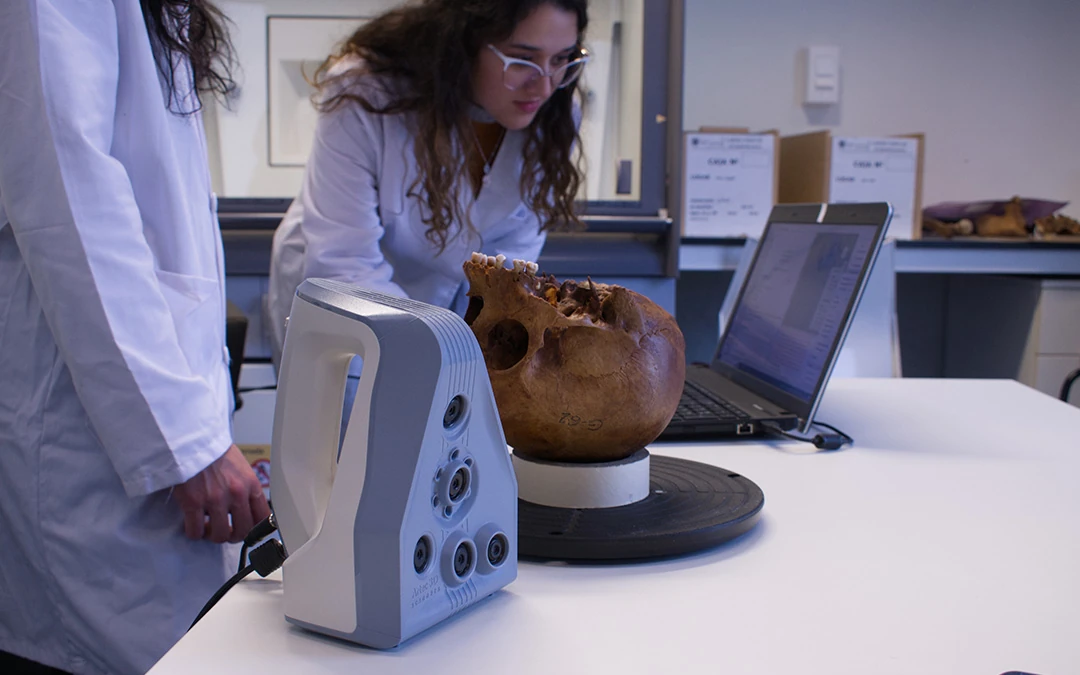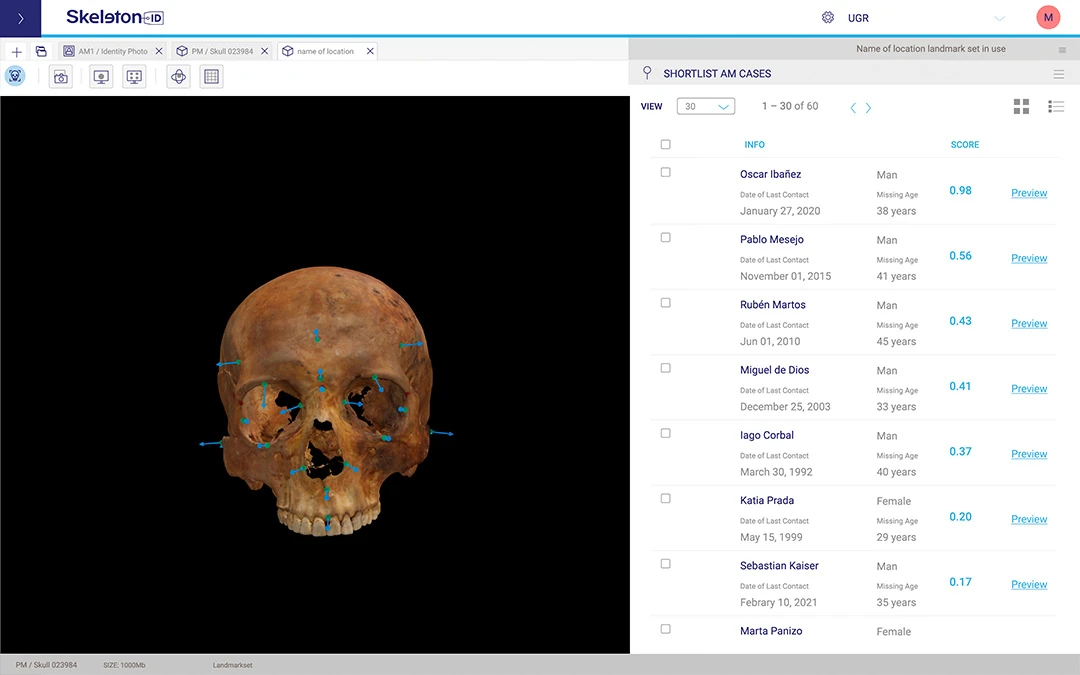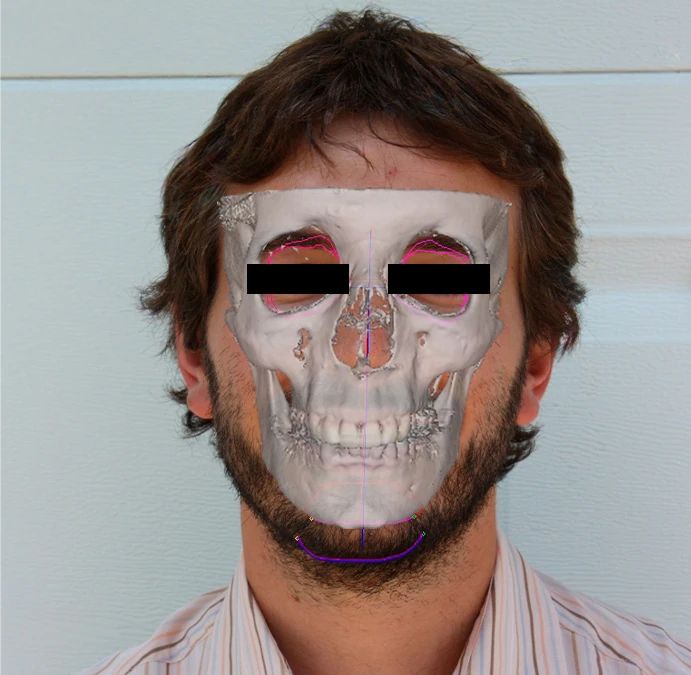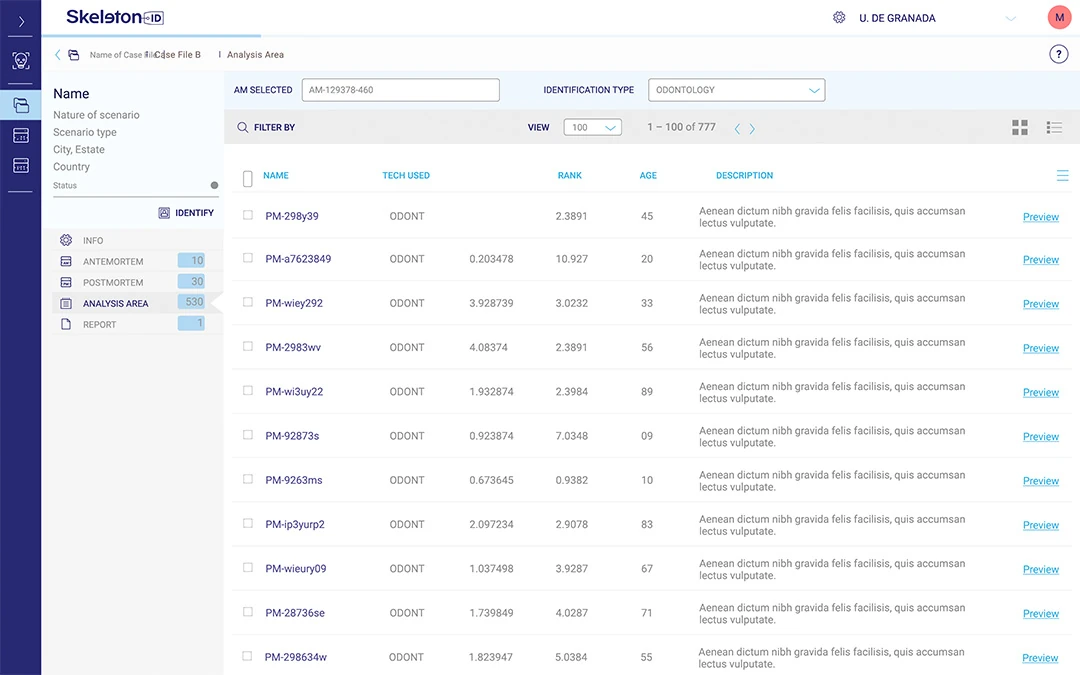Craniofacial
Superimposition
This module allows for completely automated skull-face overlays in a matter of seconds. Overlays can be performed with one or multiple photos of candidates and a 3D model of the skull. The software helps the forensic expert to perform fast, precise, and objective comparisons, no matter if 1-to-1 or 1-to-n candidates.
Patented Skull-Face Overlay Algorithms
Our patented algorithms perform automatic craniofacial superimposition in less than a second. That means even large databases can be searched for positive matches in a reasonable amount of time.
Objectivity
To increase objectivity, Skeleton·ID automatically considers the orientation of the camera, the facial pose, focal length, and subject-to-camera distance for all images used. Results of the craniofacial superimposition are measured with a likelihood ratio. The software also guides the expert to draw correct and repeatable conclusions.
Workflow

1. Scan
The module uses a 3D model of a skull of the unidentified individual and one or more facial images from missing individuals for comparison. 3D models can be obtained from segmentation of medical images, 3D scanners, or photogrammetry systems.
2. Comparison
AM data can be one or various photos of potential candidates or even entire databases.


3. Superimposition
Fully automated 2D/3D craniofacial superimposition supported by Artificial Intelligence.
4. Ranking
AI is creating a ranking of potential candidates, starting with the most likely candidate. The expert only needs to review the most likely candidates.

Reliability
The reliability of the CFS algorithm was confirmed by multiple independent studies.
- Strong Support
- Moderate Support
- Limited support
- Undetermined
- Limited support
- Moderate Support
- Strong Support
Reliability
The reliability of the CFS algorithm was confirmed by multiple independent studies.
- Strong Support
- Moderate Support
- Limited support
- Decisión
indeterminada
- Limited support
- Moderate Support
- Strong Support
Automatic Landmark Location
Anthropometric landmarks provide the base for many forensic identification methods. Locating landmarks in 2D and 3D is a manual and time-consuming task, that we have automated in the latest version of the software.
